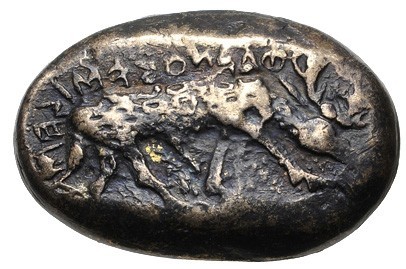- The Temple of Artemis or Artemision (Greek: Ἀρτεμίσιον; Turkish: Artemis Tapınağı), also known less precisely as the Temple of Diana, was a Greek temple dedicated to an ancient, local form of the goddess Artemis (associated with Diana, a Roman goddess). It was located in Ephesus (near the modern town of Selçuk in present-day Turkey). It was completely rebuilt twice, once after a devastating flood and three hundred years later after an act of arson, and in its final form was one of the Seven Wonders of the Ancient World. By 401 AD it had been ruined or destroyed. Only foundations and fragments of the last temple remain at the site.
- The earliest version of the temple (a temenos) antedated the Ionic immigration by many years, and dates to the Bronze Age. Callimachus, in his Hymn to Artemis, attributed it to the Amazons. In the 7th century BC, it was destroyed by a flood. Its reconstruction, in more grandiose form, began around 550 BC, under Chersiphron, the Cretan architect, and his son Metagenes. The project was funded by Croesus of Lydia, and took 10 years to complete. This version of the temple was destroyed in 356 BC by Herostratus in an act of arson.
- The next, greatest and last form of the temple, funded by the Ephesians themselves, is described in Antipater of Sidon's list of the world's Seven Wonders:
I have set eyes on the wall of lofty Babylon on which is a road for chariots, and the statue of Zeus by the Alpheus, and the hanging gardens, and the colossus of the Sun, and the huge labour of the high pyramids, and the vast tomb of Mausolus; but when I saw the house of Artemis that mounted to the clouds, those other marvels lost their brilliancy, and I said, "Lo, apart from Olympus, the Sun never looked on aught so grand"
The site of the temple today:

